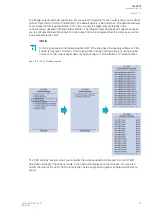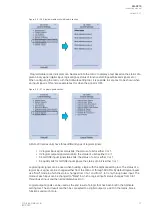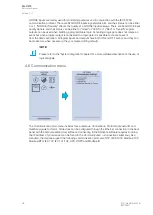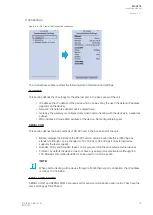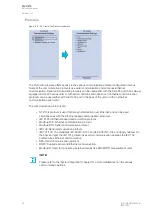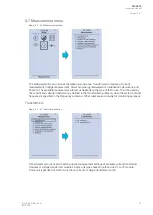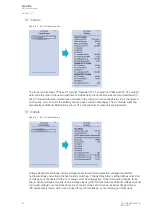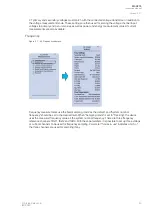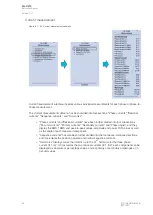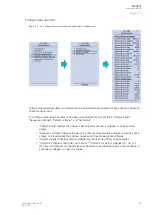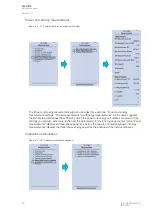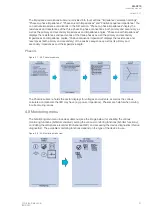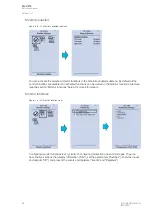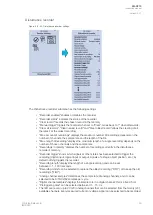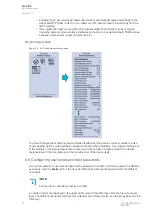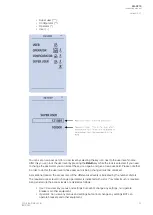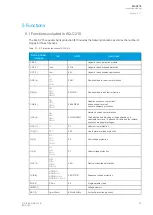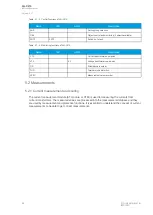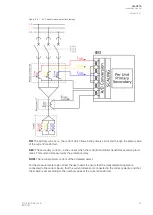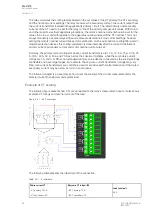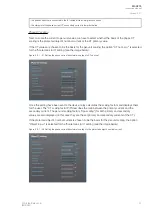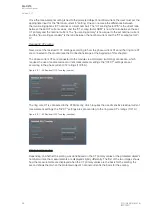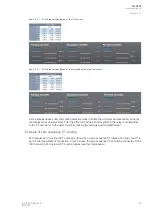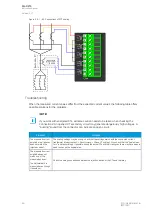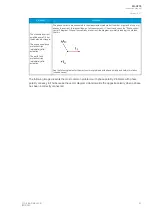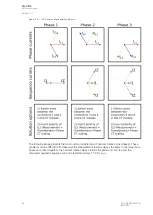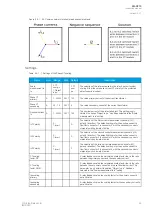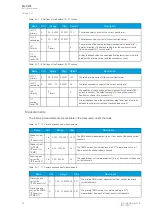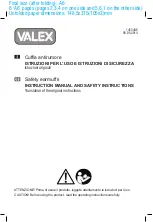
Disturbance recorder
Figure. 4.8 - 53. Disturbance recorder settings.
The
Disturbance recorder submenu has the following settings:
• "Recorder enabled" enables or disables the recorder.
• "Recorder status" indicates the status of the recorder.
• "Clear record" records the chosen record in the memory.
• "Manual trigger" triggers the recorder when set to "Clear". Goes back to "-" when afterwards.
• "Clear all records", "Clear newest record" and "Clear oldest record" allows the clearing of all,
the latest, or the oldest recording.
• "Max. amount of recordings" displays the maximum number of recordings; depends on the
number of channels, the sample rate and the legnth of the file.
• "Max. length of recording" displays the maximum length of a single recording; depends on the
number of chosen channels and the sample rate.
• "Recordings in memory" displays the number of recordings currently in the disturbance
recorder's memory.
• "Recorder trigger" shows which signals or other states has been selected to trigger the
recording (digital input, logical input or output, signals of a stage, object position, etc.); by
default nothing triggers the recorder.
• "Recording length" displays the length of a single recording and can be set
between 0.1…1800 seconds.
• "Recording mode" can be selected to replace the oldest recording ("FIFO") or to keep the old
recordings ("FILO").
• "Analog channel samples" determines the sample rate of analog channels, and it can be
selected to be 8/16/32/62 samples per cycle.
• "Digital channel samples" displays the sample rate in a digital channel; this is a fixed 5 ms.
• "Pretriggering time" can be selected between 0.1…15.0 s.
• The IED can record up to 20 (20) analog channels that can be selected from the twenty (20)
available channels. Every measured current or voltage signal can be selected to be recorded.
A
AQ
Q-C215
-C215
Instruction manual
Version: 2.07
© Arcteq Relays Ltd
IM00040
49

